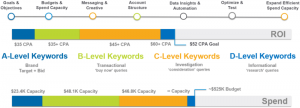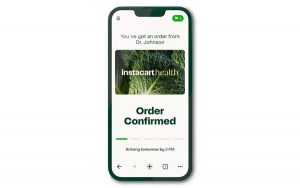Charities and not-for-profit organizations know a thing or two about running an efficient operation. Perhaps this is why so many of them appreciate the low-cost, high-return opportunity offered to them through email marketing.
Despite these benefits, many of these organizations (like many of their colleagues in the corporate world) are missing out on opportunities to engage their various target audiences and make email really work for them.
At iContact, we are dedicated to improving the success of our clients in the charity and not-for-profit sectors. Because we believe that charity starts at home, we have long offered a free email marketing account to all qualifying charities and not-for-profit organizations based in our home state of North Carolina. Non-NC-based charities and not-for-profits can benefit from a 20% discount on our services.
6 Email Marketing Tips for Charities and Not-for-Profit Organizations
- List Growth: Charities and not-for-profits need to take every opportunity to grow their email marketing lists by asking everyone involved with their organization to join their lists. If people donate time, money, goods or services to your organization, you should be asking for their email details. While you might want to take a less aggressive approach when compared to your corporate colleagues, the rules of list growth are pretty much the same.
- List Segmentation: Lists should be carefully segmented to ensure the right people get the right message at the right time. A good starting point would be to create separate lists of corporate supporters, individual supporters, volunteers and clients. Email has the ability to reach people who have no other direct line of communication. For example, read this blog to learn how a UK charity used email to maintain contact with and support people suffering from alcohol- and drug-related problems (including homelessness).
- Mobile First: With 66% of all emails being opened on mobile devices first, having mobile-friendly email campaigns (and landing pages) is just as important in the charity and not-for-profit sector as it is in the corporate world.
- Testing: Your subject lines, your body text and your calls to action (CTAs) should be tested regularly. It amazes me how many charities and not-for-profits still insist on sending emails with subject lines like “June Newsletter” – and they wonder why so few people open them. Charities seeking donations might want to test alternatives to the “Donate Now” CTA. A suggested donation of $ 5, $ 10, $ 20, $ 50 or $ 100 may yield better results. The only way to find out is to test. It’s also worth remembering that if you don’t ask, you don’t get – so don’t be shy about giving your CTA greater prominence.
- Content-led Strategy: The great thing about most charities and not-for-profit organizations is they rarely lack excellent content to share. For more advice about building a cohesive, content-led strategy (combining the power of your email, social media and blogging activities) check this post out.
- Frequency: Email provides a great opportunity to react quickly to events and influence public opinion. Don’t sit on ideas because “traditionally” you only send one newsletter per month at 11am on the second Tuesday. Remember, very few people will be waiting for your newsletter to drop at a specific time. The sooner you get your message out there, the sooner you’ll start to see successful engagement.
How has your charity or not-for-profit organization benefited from email marketing? Share your comments below:
This post first appeared on the iContact Email Marketing Blog.
Digital & Social Articles on Business 2 Community(22)
Report Post





